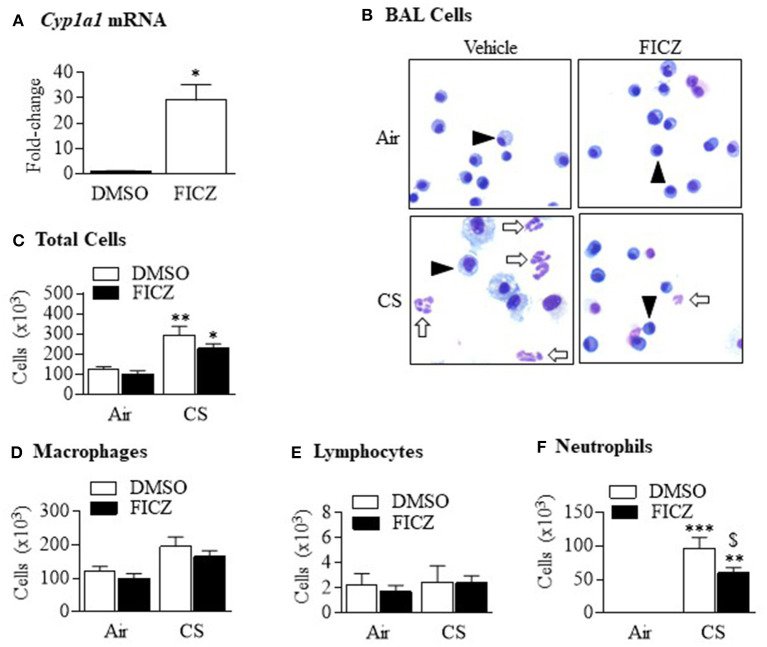Figure 8.
FICZ attenuates acute cigarette smoke-induced lung neutrophilia. Ahr+/− mice were injected (i.p.) with FICZ 1 day before the beginning of the first smoke exposure and then 1 h before each subsequent exposure for 3 days. Differential cell counts on the BAL were performed. Whole lung homogenates were used to assess Cyp1a1 mRNA expression by qRT-PCR. (A) There was a significant induction of Cyp1a1 mRNA in the lungs of Ahr+/− mice 6 h after receiving FICZ i.p. Results are expressed as means ± SEM (n = 2 mice per group). (B) There were neutrophils (arrows) detectable in the BAL of Ahr+/− mice exposed to CS and receiving only DMSO (open arrows). There were noticeably fewer neutrophils in mice which received FICZ; macrophages are indicated by arrowheads. (C) There was a significant increase in the total number of cells after CS exposure (*p < 0.05; **p < 0.01). There was a trend toward fewer cells after FICZ. (D) There was no change in the number of macrophages after CS exposure or administration of FICZ. (E) Lymphocytes were not increased after 3 days exposure to CS or the levels modified by FICZ. (F) There was a significant induction in the number of neutrophils after exposure to CS (**p < 0.01; ***p < 0.0.001). Administration of FICZ significantly decreased the number of neutrophils caused by smoke exposure ($p < 0.0.05). Results are shown as means ± SEM (n = 7–8 male and female mice per group and are a compilation of two independent experiments).

